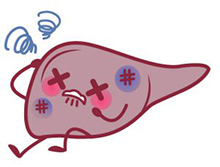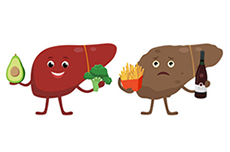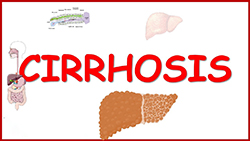Introduce:
Liver cirrhosis refers to "end-stage liver disease" caused by chronic exposure to pathogens and toxins and autoimmune diseases that cause liver cell (liver cell) damage. It is characterized by fibrosis, scarring, and liver nodule formation that lead to disruption of normal functions. Liver damage causes inflammation, which causes transforming growth factor beta (TGF-β) to activate stellate cells, which then transform into fibroblasts and secrete collagen (connective tissue). This process is called fibrosis. Natural killer cells and killer T cells also mediate damage. Under normal circumstances, the liver will regenerate due to trauma, with minimal fibrosis and scar tissue formation. If the harmful stimuli are not removed, and the condition is not noticed and treated, it will eventually lead to widespread fibrosis and liver dysfunction. According to data from the Centers for Disease Control and Prevention, 1.8% of adults in the United States have been diagnosed with cirrhosis. Long-term alcohol abuse and viral hepatitis are the most common causes of liver cirrhosis. The main complications of liver cirrhosis are portal hypertension (increased hepatic portal vein pressure), esophageal varices (dilated esophageal veins can cause bleeding), hepatorenal syndrome (HRS), and hepatic encephalopathy; the results can be fatal. Patients usually do not show signs until late in the disease. Signs and symptoms are related to liver dysfunction, including jaundice, itching, elevated liver enzymes, iron deficiency anemia, edema, and confusion.
Signs and symptoms that indicate that you may have cirrhosis:
The functions of the liver include synthesis of plasma proteins (for transportation and immunity), detoxification of toxic substances, energy production and blood filtration. Liver dysfunction in cirrhosis leads to signs and symptoms related to the liver’s inability to perform its functions, as shown below:
1. Jaundice (yellowing of the skin and conjunctiva)
2. Fever, lethargy, nausea, vomiting
3. Portal hypertension and collateral circulation
4. Elevated liver enzymes (except for alcoholic liver disease, in most cases AST>ALT)
5. Iron deficiency anemia caused by varicose vein bleeding
6. Renal failure caused by portal hypertension and ascites reduced circulation volume lead to the activation of the renin-angiotensin-aldosterone system (RAAS), that is, HRS
7. Hyperammonemia caused by urea cycle disorder leads to hepatic encephalopathy. The patient's manifestations are:
(i) Chaos

(ii) Memory loss
(iii) Respiratory insufficiency
(iv) coma
8. Kayser-Fleischer ring in the eye due to copper deposits in liver cirrhosis caused by Wilson's disease
9. Opportunistic bacterial infections due to a weakened immune system
10. Edema (decreased plasma osmotic pressure due to decreased protein synthesis)
11. Clotting factors and thrombocytopenia lead to prolonged bleeding time
12. Loss of libido and gynecomastia (due to increased estrogen synthesis and decreased metabolism)
The 10 top causes of liver cirrhosis you need to know:
There are many factors that cause advanced liver disease, but cirrhosis is usually asymptomatic in the early stage. These factors include:
1. Chronic alcohol intake (glutathione consumption and aldehyde-mediated injury)
2. Viral hepatitis (HBV and HCV)
3. Non-alcoholic fatty liver
4. Wilson's disease (copper accumulation caused by ceruloplasmin deficiency)
5. Drug toxicity (acetaminophen, methotrexate, isoniazid, etc.)
6. Autoimmune diseases such as primary biliary cirrhosis
7. Hemochromatosis
8. Hypervitamin A (excess vitamin A stored in stellate cells stimulates activation)
9. Alpha-1 antitrypsin deficiency
10. Reye's syndrome
How to manage liver cirrhosis:

Perform a liver biopsy for diagnosis. Treatment of the underlying cause and lifestyle changes (low-salt diet to prevent high blood pressure, avoiding alcohol and smoking, weight loss, etc.) are essential to prevent further damage (because advanced disease cannot be reversed). Vaccination of viral hepatitis virus can prevent liver cirrhosis. Antibiotics are used to treat bacterial infections that are a complication of liver cirrhosis. Autoimmune liver cirrhosis recommends the use of immunosuppressive agents, while viral cases require antiviral drugs. For Wilson's disease and hemochromatosis, chelating agents are recommended. Urodeoxycholic acid is used to treat primary biliary cirrhosis and reduce the risk of esophageal varices.




